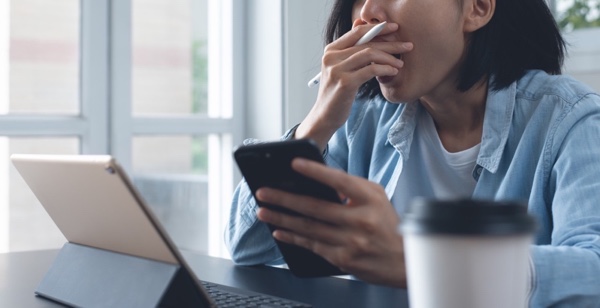Inkjet & Digital Printing
Digital fatigue? Why print is the perfect antidote

Thursday 03. December 2020 - The findings of JP Morgans Media Consumption in the Age of Covid 19 will surprise precisely nobody. Its report reviewing consumer activity for the first couple of months of the pandemic recorded a huge increase in global social media use.
By John Blyth, Marketing and Communications Manager, Commercial and Industrial Printing Group, Ricoh Europe
· Twitters Q1 2020 average of daily active users reached approximately 164 million – up 23% from 2019.
· Facebooks total use increased by more than 50% in April in regions most affected by the virus.
· Messenger and WhatsApp channels, saw voice and video calling more than double. In Italy, for example, time spent across its app suite increased 70% in the first two months of the pandemic and group calling increased by 1,000% during April.
It also found Netflixs first quarter subscriptions were 15.8 million, compared to 9.6m in 2019. A further 10m were added in Q2 taking the six month figure to almost its entire 28m subscription for 2019.
During lockdown there was little else to do.
While these media proved popular in the initial stages of the pandemic, some unwelcome downsides have since been identified, particularly as a result of the high levels of social media consumption. They include depression, loneliness, hyperactivity and poor sleep.
Investigating this issue, a study of students by the University of Pennsylvania, found that limiting social media use to below 30 minutes a day can make a significantly positive impact on loneliness and depression.
It is of course entirely predictable that digital fatigue and digital-related stress induced by the always-on online world that many consumers inhabit has spiked as the pandemic forced people inside and onto their devices.
There is though, lets not forget, a familiar way to stay informed and connected that does not carry the risks described above. Step forward print – the perfect medium for extraordinary times. With its proven ability to also relax, captivate and engage.
We already know that print – whether it is magazines, newspapers, books or personalised communications – is more:
· Trusted is as a medium – 87% of respondents described mail as believable and consumers trust the stories they read in printed newspapers (51%) more than those on social media (24%). Also, 59% of consumers do not trust many of the ads they see online and 63% do their best to block or avoid them.
· Memorable – 65% of people are more likely to give their full attention to mail while more consumers believe they gain a deeper understanding of news stories when reading from print media (65%) over online news sources (49%).
· Relaxing – 69% of consumers think it is important to switch off and enjoy printed books and magazines while 74% of 18-24 year olds believe they spend too much time on electronic devices and 58% are concerned it could be damaging for their health.
In its many formats print remains a wonderful communication medium. Particularly as at this unique time it can create calming experiences and an escape from the pressures associated with the constant stream of digital material directly into peoples brains. Furthermore, paper can be biodegradable – especially when using eco-friendly inks and treatment processes.
By highlighting sustainable initiatives, print can not only help people step up away from the digital maelstrom, but also contribute to the protection of the environment. So, we can all disconnect and simultaneously play a part in ameliorating our impact on the planet.
Amongst the discord of these times, we can at least agree that we live still in a surreal world, and although we have at last some positive rays of hope, we will never return to Planet Normal. Yes, an uncertain future may lie ahead but its good to know that print can remain an ever-constant source of comfort and trust.
